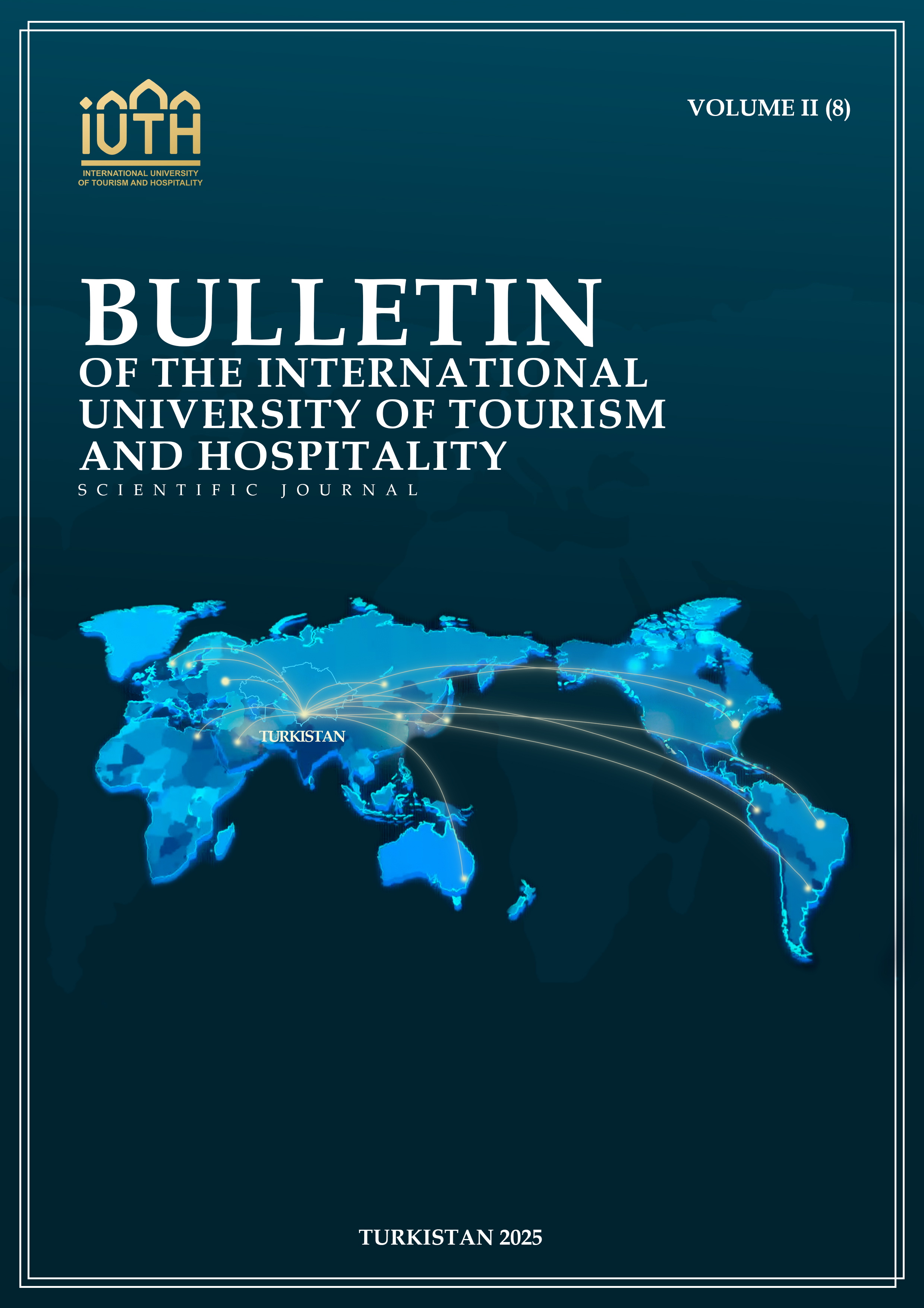RELIGIOUS AND RITUAL CULTURE OF TURKISTAN IN THE 11TH–14TH CENTURIES AND ITS POTENTIAL FOR SPIRITUAL TOURISM (BASED ON MATERIALS FROM THE KULTOBE SETTLEMENT)
Keywords:
Kultobe, temple, Yassy, Shavgar, Turkestan, burial rite, Khoja Ahmed YasawiAbstract
The question of Turkistan’s role in the history of the Turkic world remains relevant and insufficiently explored. The recognition of this area as sacred long before the arrival of Islam indicates a deep-rooted historical and cultural tradition of perceiving Turkistan as a spiritual center. In the collective historical memory of Turkic peoples, Turkistan functions not merely as a geographic location, but as a symbol of spiritual and civilizational identity. The signing of the Law “On the Special Status of the City of Turkistan” by the President of the Republic of Kazakhstan, K. Tokayev, underscores its strategic importance as a cultural-historical and religious hub. This article presents the results of archaeological and osteological research conducted at the Kultobe settlement—an integral part of medieval Turkistan. The discovered burial complexes and cult-related artifacts, dated to the 11th–14th centuries, reflect a unique model of interaction between Islamic norms and local belief systems. The presence of gold earrings, bronze bracelets, and glass beads in female burials testifies to the coexistence of Sharia regulations with traditional practices. The findings are of great significance not only for academic research but also for the development of spiritual and cultural tourism. Sacred sites such as Kultobe can serve as key components of pilgrimage routes and thematic tours that immerse visitors in the spiritual and cultural history of the region. The diversity of burial practices, the abundance of ritual artifacts, and unique architectural features create a foundation for emotional and value-based engagement with the past.
Furthermore, anthropological analysis allows for a deeper understanding of the social structure and ethnocultural composition of the medieval Turkistan population, affirming the city’s importance not only as a religious but also as a political and military center. Taken together, the results of this study provide a strong scholarly basis for reimagining Turkistan as a major site of sacred tourism in contemporary Kazakhstan.


